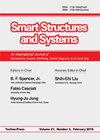20世纪文化遗产的结构分析和健康监测:罗马弗拉米尼奥体育场
IF 2.2
3区 工程技术
Q2 ENGINEERING, CIVIL
引用次数: 10
摘要
这项工作涉及二十世纪文化遗产的宝贵结构:罗马弗拉米尼奥体育场的结构分析和健康监测(SHM)。Flaminio是由Pier Luigi Nervi为1960年罗马奥运会设计和建造的标志性钢筋混凝土体育设施之一。鉴于可预见的SHM活动,本文首先报道了弗拉米尼奥体育场的结构分析,提出了旨在研究不同建模假设下体育场响应的初步分析和整个结构的三维有限元(FE)模型。结果表明,主看台顶棚在弗拉米尼奥球场的地震响应中起着关键作用;此外,它的保护状况也令人担忧。因此,本文对冠层的结构建模和动力特性进行了深入的研究。其不寻常的特征,如几何形状,材料特性和与主钢筋混凝土框架的动态相互作用进行了彻底的评估。为了验证以高模态密度为特征的有限元结果,并研究结构的响应,在工作条件下进行了动力试验。仅采集的输出数据用于校准初始FE模型。预测的树冠的静态和动态响应最终用于指导量身定制的监测系统的设计。相关数据管理是在遗产建筑信息建模(HBIM)环境中构建的。本研究为20世纪遗产建筑和基础设施的主动结构保护策略绘制了一个可行的过程。本文章由计算机程序翻译,如有差异,请以英文原文为准。
Structural analysis and health monitoring of twentieth-century cultural heritage: the Flaminio Stadium in Rome
This work deals with structural analysis and health monitoring (SHM) of a valuable structure of the twentiethcentury cultural heritage: the Flaminio Stadium in Rome. The Flaminio is one of the iconic reinforced concrete sport facilities designed and built by Pier Luigi Nervi for the 1960 Olympic Games of Rome. In view of the foreseen SHM activity, the structural analysis of the Flaminio Stadium is firstly reported by presenting either preliminary analyses, aimed at studying the stadium response under different modeling hypotheses, and a three-dimensional Finite Element (FE) model of the entire structure. It turns out that the main grandstand canopy plays a pivotal role in the Flaminio's structural response to seismic excitation; in addition, its state of conservation raises some concern. Therefore, the structural modeling and dynamic characterization of the canopy is deepened in the paper. Its unusual features, such as geometry, material characteristics and dynamic interplay with the hosting main reinforced concrete frames are thoroughly assessed. To validate the FE results, characterized by a high modal density, and investigate the response of the structure, dynamic tests carried out under operating conditions are presented. The output-only collected data are used to calibrate the initial FE model. The predicted static and dynamic responses of the canopy are eventually exploited to guide the design of a tailored monitoring system. The relevant data management is framed in a heritage building information modeling (HBIM) context. This study draws a viable process for a proactive structural conservation strategy of twentieth-century heritage buildings and infrastructures.
求助全文
通过发布文献求助,成功后即可免费获取论文全文。
去求助
来源期刊

Smart Structures and Systems
工程技术-工程:机械
CiteScore
6.50
自引率
8.60%
发文量
0
审稿时长
9 months
期刊介绍:
An International Journal of Mechatronics, Sensors, Monitoring, Control, Diagnosis, and Management airns at providing a major publication channel for researchers in the general area of smart structures and systems. Typical subjects considered by the journal include:
Sensors/Actuators(Materials/devices/ informatics/networking)
Structural Health Monitoring and Control
Diagnosis/Prognosis
Life Cycle Engineering(planning/design/ maintenance/renewal)
and related areas.
 求助内容:
求助内容: 应助结果提醒方式:
应助结果提醒方式:


